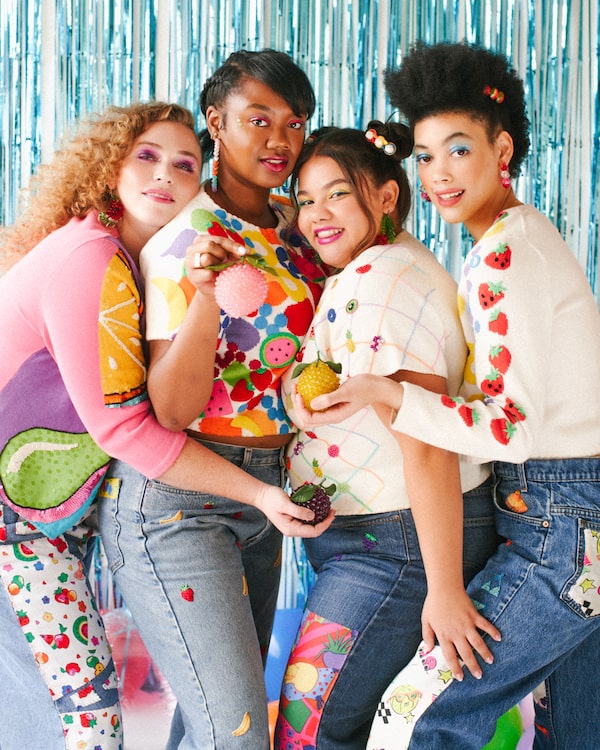
In 2019, Canada’s plus-size women’s apparel market generated $20.9-billion, and year-on-year sales are steadily growing.Handout
It’s conventional wisdom among the sustainability minded that shopping for vintage or second hand clothing can help green your closet. Not only can you often find cool and unusual pieces, you’re saving resources such as the water and raw materials used to manufacture a new garment. Many of us shop second hand because it’s generally more affordable, too.
Yet for all its benefits, second-hand clothing isn’t a one-size-fits-all sustainability solution – literally. Vintage and second-hand sellers often fill their inventories with straight size items, leaving plus size shoppers in the lurch.
The usual rationale for this dearth of larger vintage pieces is that they’re simply harder for sellers to find. According to Emma Zack, founder of Brooklyn-based plus-size vintage store Berriez, mid-century plus-size clothing can be elusive, as relatively few companies were manufacturing extended sizes prior to the 1980s. “But there are most definitely pieces out there, because I’ve found them. You just have to look harder,” says Zack. “There really isn’t an excuse for stores not to carry at least a few extended sizes.”
There are certainly sellers who do make an effort. Canadian vintage and second-hand retailers including 96 Tears and Crystal Vintage Shop in Toronto, Clothes Up & Personal in Calgary, and Better Off Duds in Saskatoon cater to a broad size range, while U.S. retailers such as Los Angeles’s Proud Mary Fashion and Salt Lake City’s Copperhive Vintage ship their wares north of the border. As well as selling genuine vintage, Jacqueline Whitmore, owner of Copperhive, sources vintages fabrics to make her own mid-century-style skirts and dresses. “So I can fill that vintage hole in my heart for fashion,” she says.
Increasingly, plus size vintage lovers such as Zack and Whitmore are taking things into their own hands when it comes to making chic, sustainable second-hand pieces available to all. Berriez stocks covetable items including emerald velvet dresses and fringe-hem skirts in sizes up to a 4XL+, with each piece’s measurements labeled clearly for online shopping ease. In addition to brick and mortar and website sales, Zack sells over Instagram, and has noticed more online plus size vintage businesses launching on the social media platform during the pandemic. “There’s just a little community growing on Instagram,” she says, including accounts such as @shop.fatties, @ethicalbodies and @luvsickplus. “It’s awesome because when I started two years ago, there wasn’t that at all.”
Sustainable fashion’s size issue isn’t limited to the vintage market. “Currently, there is still a very big mentality of fatphobia in sustainability,” says Vancouver model and writer Lydia Okello, who uses the pronouns they/them. Okello says the misconception is that plus size folks aren’t interested in ethically-made quality items. “I do find that extremely frustrating because the reason why fat folks buy clothing that is not well made is because of what’s available to them,” they say. Okello’s favourite spot to shop vintage in Vancouver is Community Thrift & Vintage, where staff are consistent about stocking plus-size items.
To relieve the unnecessary frustrations of shopping for plus size clothing second hand, Whitmore says vintage retailers can start with their marketing. “When you take pictures of things, shoot them on fat people, include fat people in your process,” she says. The pickers behind online shops can help their plus-size audience by styling larger items on people that fit them true-to-size, rather than taking a size 18 cardigan and having a size four model wear it as an oversized piece. Okello and Zack both point out that marketing plus size vintage clothing to straight size people reduces the already limited pool of larger second-hand options. Realizing that the entire quarter-rack of 2XL dresses at your local thrift store has been snapped up in service of a baggy frock trend can be pretty frustrating.
In 2019, Canada’s plus size women’s apparel market generated $20.9-billion and year on year sales are steadily growing. Vintage retailers who don’t diversify their racks are missing out on an active group of shoppers.
“The plus size clothing community is very chatty,” says Okello. “Because we have such limited access, we all talk to each other and give each other advice on where to find things.”